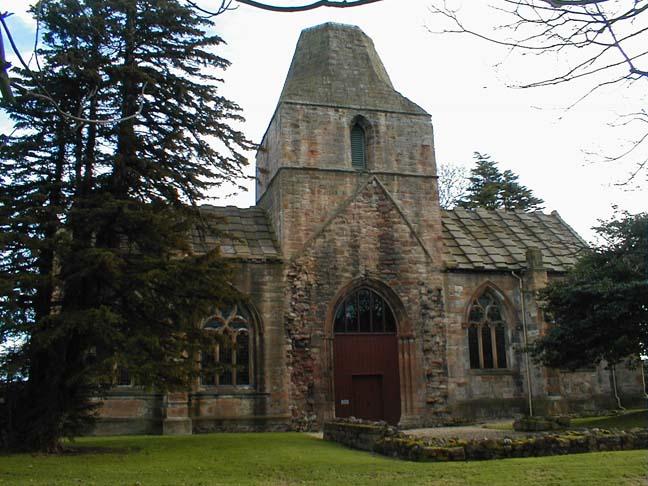




























|

The Church of St. Mary and the Holy Cross.
Sir Alexander Seton, in the time of king David II, was buried in the parish church of Seton. Also that Katherine Sinclair, wife of William, first Lord Seton, about 1390, "biggit ane yle on the south side of the paroch kirk of Seton of fine estlar, pendit and theikit it with stane, with ane sepulchar thairin quhair she lies". Her son John, the second Lord Seton, who died in 1441 was buried in this aisle. George, the third Lord Seton, had the church raised to collegiate status, and for Mass to be performed for the souls of himself and his family. He built the sacristy and covered it with stone, and was buried near the high altar. The collegiate foundation consisted of a provost, six prebendaries, one clerk, and two singing boys. Succeeding members of the family extended the church through the 15th and early 16th century, until it fell into disuse following the reformation. In 1544 the structure suffered much at the hands of the English invaders, who carried off the organ and bells, and burnt the timber work. Although rebuilt by George, seventh Lord Seton and the Earls of Winton, it was then used only as a private family chapel and burial place until being severely damaged during the Stuart troubles. Defacing of the chapel and smashing of the windows and monuments took place post-reformation. Further damage in the 18th century following the forfeiture of the Seton Estates following the failed Jacobite rebellion in 1715.
|
The Seton
Collegiate Church, East Lothian, Scotland, UK, c/o Historic Scotland, Tel.
+44 131 668 8600. |